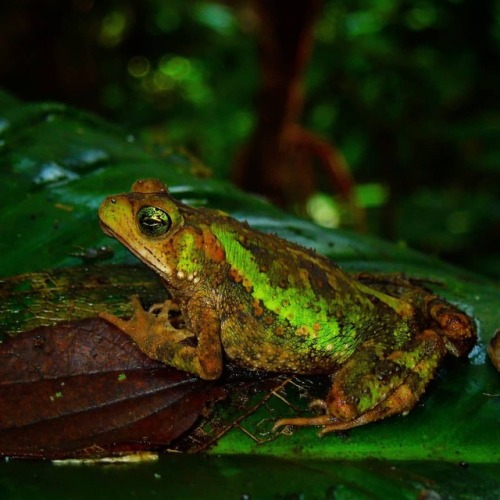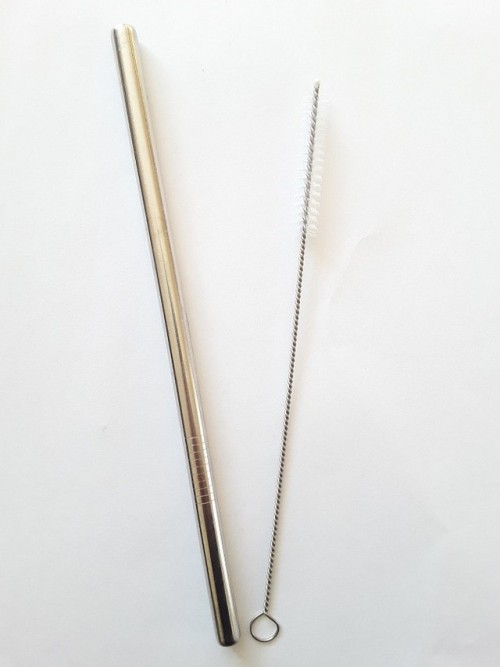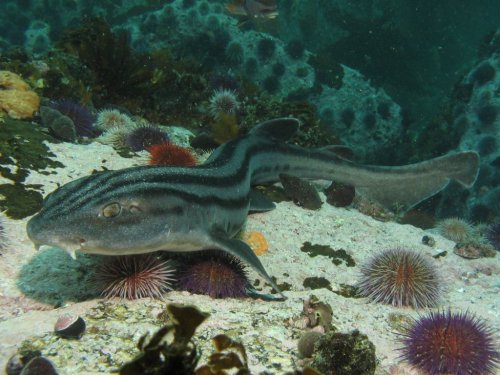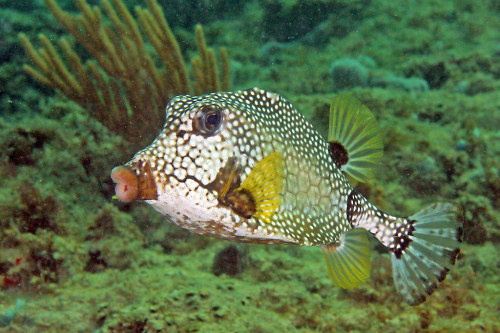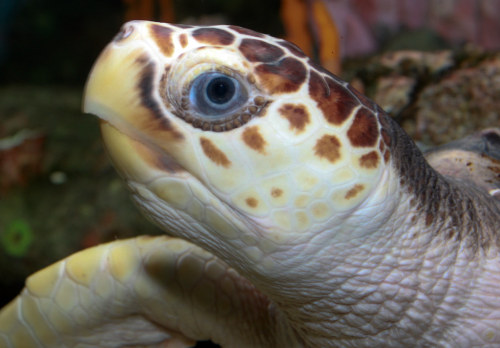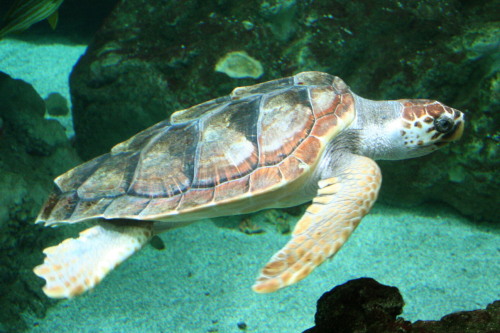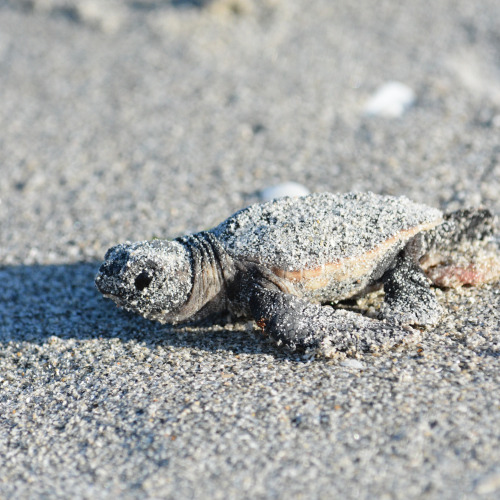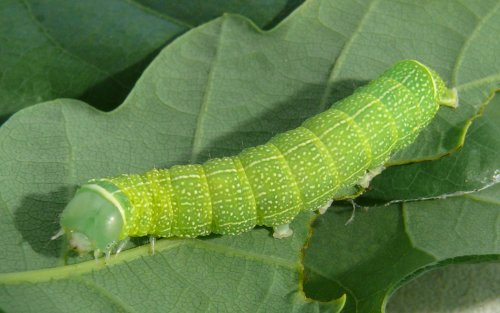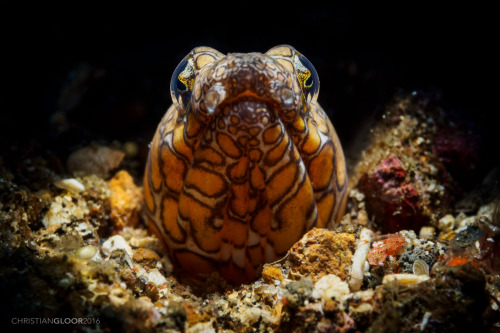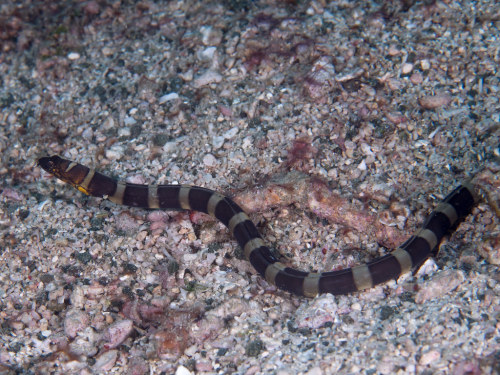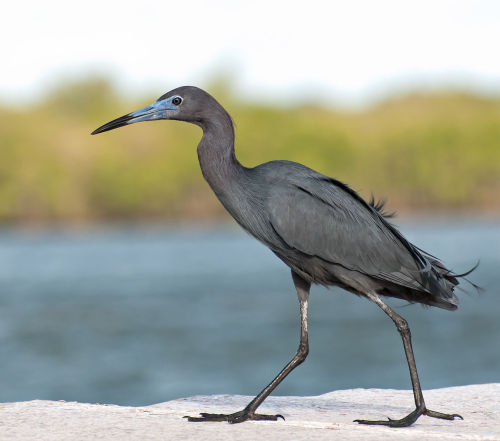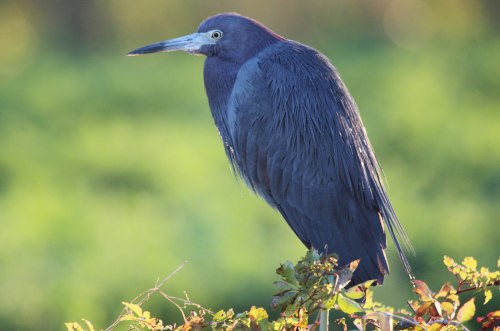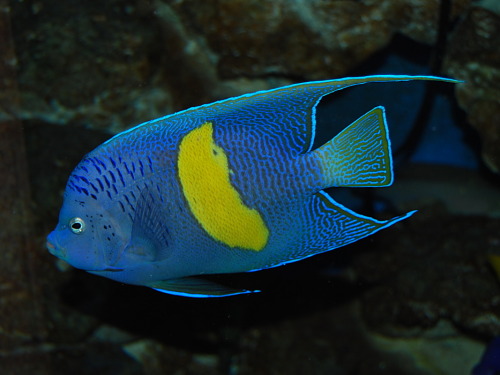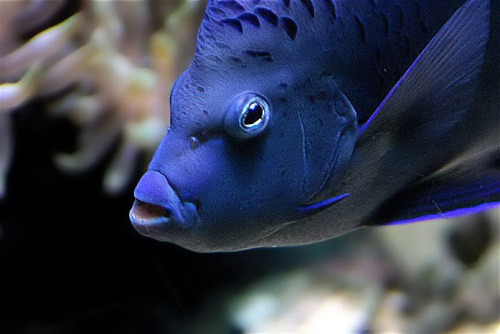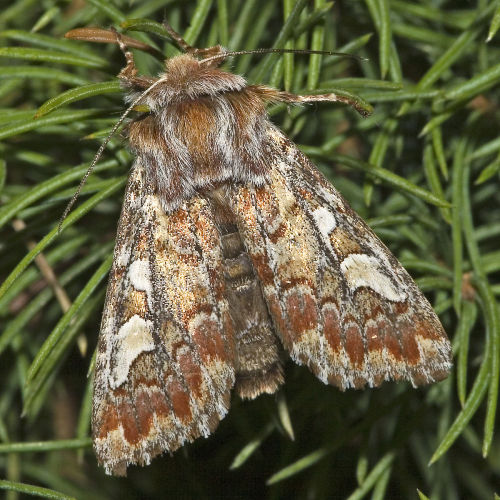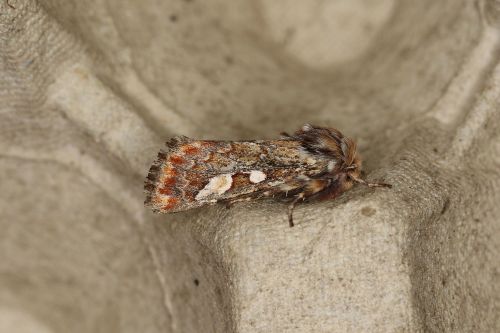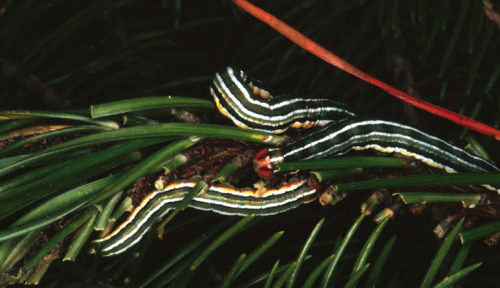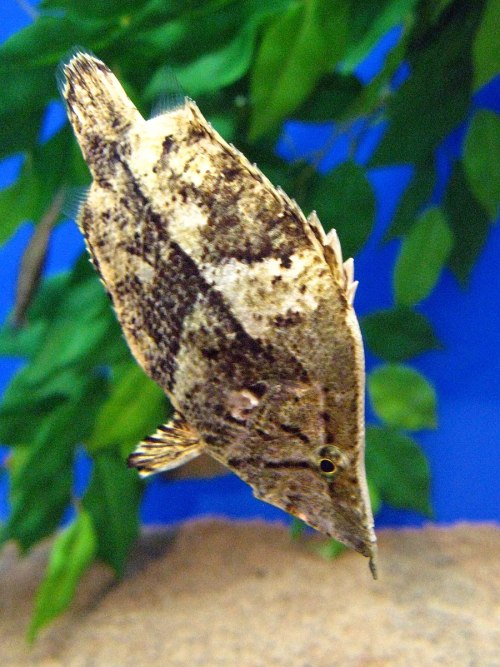#biodiversity
A climbing toad in Costa Rica.
#toad #amphibians #herps #rainforest #biodiversity #arboreal #amphibiansofinstagram #herpsofinstagram #ecology #CostaRica #CentralAmerica
Post link

Antarctica - the frozen continent. It is hard to think of a place on Earth that is less hospitable to life. Yet life does exist here and some of it is botanical. Though few in number, Anarctica’s diminutive flora is able to eke out an existence wherever the right conditions present themselves. It goes without saying that these plants are some of the hardiest around.
It is strange to think of Antarctica as having any flora at all. How many descriptions of plant families and genera say something to the effect of “found on nearly every continent except for Antarctica.” It didn’t always used to be this way though. Antarctica was once home to a diverse floral assemblage that rivaled anything we see in the tropics today. Millions upon millions of years of continental drift has seen this once lush landmass positioned squarely at Earth’s southern pole.

Situated that far south, Antarctica has long since become a frozen wasteland of sorts. The landscape is essentially a desert. Instead of no precipitation, however, most water in this neck of the woods is completely locked up in ice for most of the year. This is one reason why plants have had such a hard time making a living here. That is not to say that some plants haven’t made it. In fact, a handful of species thrive under these conditions.
When anyone goes looking for plants in Antarctica, they must do so wherever conditions ease up enough for part of the year to allow terrestrial life to exist. In the case of this frozen continent, this means hanging out along the coast or one of handful of islands situated just off of the mainland. Here, enough land thaws during the brief summer months to allow a few plant species to take root and grow.

The flora of Antarctica proper consists of 2 flowering plant species, about 100 species of mosses, and roughly 30 species of liverwort. The largest of these are the flowering plants - a grass known as Antarctic hair grass (Deschamsia antarctica), and member of the pink family with a cushion-like growth habit called Antarctic pearlwort (Colobanthus quitensis). Whereas the hair grass benefits from being wind pollinated, the Antarctic pearlwort has had to get creative with its reproductive needs. Instead of relying on pollinators, which simply aren’t present in any abundance on Antarctica, it appears that the pearlwort has shifted over to being entirely self-pollinated. This seems to work for it because if the mother plant is capable of living on Antarctica, so too will its clonal offspring.
By far the dominant plant life on the continent are the mosses. With 100 species known to live on Antarctica, it is hard to make generalizations about their habits other than to say they are pretty tough plants. Most live out their lives among the saturated rocks of the intertidal zones. What we can say about these mosses is that they support a bewildering array of microbial life, from fungi and lichens to protists and tardigrades. Even in this frozen corner of the world, plants form the foundation for all other forms of life.


The coastal plant communities of Antarctica represent hotbeds of biodiversity for this depauperate continent. They reach their highest densities on the Antarctic Peninsula as well as on coastal islands such as south Orkney Islands and the South Shetland Islands. Here, conditions are just mild enough among the various rocky crevices for germination and growth to occur. Still, life on Antarctica is no cake walk. A short growing season, punishing waves, blistering winds, and trampling by penguins and seals present quite a challenge to Antarctica’s botanical denizens. They are able to live here despite these challenges.

Still, humans take their toll. The Antarctic Peninsula is experiencing some of the most rapid warming on the planet over the last century. As this region grows warmer and drier each year, plants are responding accordingly. Antarctic mosses along the peninsula are increasingly showing signs of stress. They are starting to prioritize the production of protective pigments in their tissues over growth and reproduction. Moreover, new species of moss are starting to take over. Rapid warming and drying of the Antarctic Peninsula appears to be favoring species that are more desiccation tolerant at the expense of the continents endemic moss species.
Changes in the structure and composition of Antarctica’s moss beds is far from being a scientific curiosity for only bryologists to ponder. It is a symptom of greater changes to come.
I now know why they call these insects “hanging thieves.” After they catch their prey, these flies perch by one or two of their legs and using the rest to manipulate the meal. Their larvae live in the soil, feeding on grubs. No insect is safe with these predators around.
#inthegarden #diptera #arthropods #damselfly #hangingthief #odonate #beneficialbugs #nativeplants #garden #gardener #gardenersworld #predatorandprey #predator #hunting #biodiversity #ecology
Post link
OVER 9K SPECIES SHOW FIRTS ATLAS OF MARINE LIFE FROM ANTARCTICA
Details about the marine life of 9000 species that inhabit Antarctica, from tiny microbes to large cetaceans were collected for the first time in an atlas on the remote and icy southern seas.
The ‘Biogeographic Atlas of the Southern Ocean’ was developed over four years by an international team of marine biologists and oceanographers and contributions of more than a hundred scientists from Australia, New Zealand, USA, France, Belgium, Spain or Chile.
This work, coordinated by the Scientific Committee on Antarctic Research (SCAR) and presented at a scientific conference held in New Zealand this week, contains 66 chapters, complete and comprehensive data of some 9,000 species and 800 maps and 100 color photographs. Researcher compiled data on the occurrence, evolution, genetic changes and effects of climate change on all of them.
- The database described from microorganisms to large cetaceans
- Over a hundred of scientists have worked on the atlas for four years
- Still fall outside the description 1,000 to 2,000 species
- First chapter is available free
- MOREiATLAS
Post link



Lion-tailed macaque (Macaca silenus)
The lion-tailed macaque is an Old World monkey endemic to the Western Ghats of South India. The lion-tailed macaque is a rainforest dweller; it is diurnal, meaning it is active exclusively in daylight hours. It is a good climber and spends a majority of its life in the upper canopy of tropical moist evergreen forests. Unlike other macaques, it typically avoids humans when possible. Lion-tailed macaque behaviour is characterized by typical patterns such as arboreal living, selectively feeding on a large variety of fruit trees, large interindividual spaces while foraging, and time budgets with high proportion of time devoted to exploration and feeding.
photo credits: Wer-Al Zwowe,Nihaljabinedk,Kalyanvarma
Pyjama shark (Poroderma africanum)
The pyjama shark is a species of catshark, and part of the family Scyliorhinidae, endemic to the coastal waters of South Africa. This abundant, bottom-dwelling species can be found from the intertidal zone to a depth of around 100 m, particularly over rocky reefs and kelp beds. With a series of thick, parallel, dark stripes running along its stout body, the pyjama shark has an unmistakable appearance. It can grow up to a length of 1.1 m long. The pyjama shark is primarily nocturnal, spending most of the day lying motionless and hidden in a cave or crevice or among vegetation. It often forms groups, particularly during summer. This species is an opportunistic predator that feeds on a wide variety of fishes and invertebrates; it favors cephalopods and frequents the spawning grounds of the chokka squid. When threatened, it curls into a circle with its tail covering its head. Reproduction is oviparous, with females laying rectangular, dark brown egg cases two at a time year-round.
photo credits: Guido Zsilavecz,Illustrations of the Zoology of South Africa
Post link
Smooth trunkfish (Lactophrys triqueter)
The smooth trunkfish is a species of boxfish found on and near reefs in the Caribbean Sea, Gulf of Mexico and subtropical parts of the western Atlantic Ocean. The smooth trunkfish has an angular body sheathed in plate-like scales, growing to a maximum length of 47 cm, though 20 cm is a more normal size. The smooth trunkfish is found down to a depth of about 50 m on coral reefs and over sandy seabeds. The smooth trunkfish is normally solitary but sometimes moves around in small groups. It uses its protuberant lips to expel a jet of water which disturbs the sandy seabed and reveals any shallowly buried benthic invertebrates. It feeds on small molluscs, polychaete worms, acorn worms, peanut worms, small crustaceans, sponges and tunicates.
photo credits: Kevin Bryant
Post link
Loggerhead sea turtle (Caretta caretta)
The loggerhead sea turtle is a species of oceanic turtle distributed throughout the world. It is a marine reptile, belonging to the family Cheloniidae. The average loggerhead measures around 90 cm in carapace length when fully grown. The adult loggerhead sea turtle weighs approximately 135 kg, with the largest specimens weighing in at more than 450 kg. The skin ranges from yellow to brown in color, and the shell is typically reddish brown. The loggerhead sea turtle is found in the Atlantic, Pacific, and Indian Oceans, as well as the Mediterranean Sea. It spends most of its life in saltwater and estuarine habitats, with females briefly coming ashore to lay eggs. The loggerhead sea turtle is omnivorous, feeding mainly on bottom-dwelling invertebrates. Its large and powerful jaws serve as an effective tool for dismantling its prey. Young loggerheads are exploited by numerous predators; the eggs are especially vulnerable to terrestrial organisms. Once the turtles reach adulthood, their formidable size limits predation to large marine animals, such as sharks. The loggerhead sea turtle is considered a vulnerable species by the International Union for the Conservation of Nature. In total, 9 distinct population segments are under the protection of the Endangered Species Act of 1973, with 4 population segments classified as “threatened” and 5 classified as “endangered”.
photo credits: Brian Gratwicke,Brian Gratwicke,Strobilomyces,Jean-Lou Justine
Post link
Common Quaker (Orthosia cerasi)
The common Quaker is a moth of the family Noctuidae. It is distributed throughout Europe and is also found in Turkey, Israel, Transcaucasia, Russia and eastern Siberia. This is a variable species, the ground colour of the forewings ranging from greyish to orangey brown, sometimes with a broad dark band. The most distinctive features are two large stigmata, each edged by a narrow pale line, with a similarly coloured subterminal line.The wingspan is 34–40 mm. This moth flies at night in March and April and is attracted to light and sugar. The larva feeds on various trees and shrubs including apple, buckthorn, elm, oak, pear, poplar and willow as well as various Prunus species. The species overwinters as a pupa.
photo credits: Olaf Leillinger,Harald Süpfle
Post link
Napoleon snake eel(Ophichthus bonaparti)
The Napoleon snake eel is an eel in the family Ophichthidae (worm/snake eels). It is a marine, tropical eel which is known from the Indo-Pacific, including Durban, South Africa, Mauritius, Indonesia, Japan, Australia, and the Penghu Islands. It is known to dwell at a depth of 20 metres, and inhabits lagoons and reefs; it forms solitary burrows in sand sediments. Males can reach a maximum total length of 75 cm.
photo credits: Christian Gloor,divemecressi,Rickard Zerpe
Post link
Little blue heron (Egretta caerulea)
The little blue heron is a small heron belonging to the family Ardeidae. These herons breed in the Gulf states of the United States, through Central America and the Caribbean south to Peru and Uruguay. It is a resident breeder in most of its range, but some northern breeders migrate to the southeastern US or beyond in winter. This species is about 64–76 cm long, with a 102 cm wingspan, and weighs 325 g.These herons prefer freshwater swamps and lagoons in the South, while on islands in the North they inhabit coastal thickets. They breed in sub-tropical and tropical swamps with mangrove vegetation, wetlands (bogs, fens, peatlands, etc.) and marine intertidal salt marshes. It eats fish, frogs, crustaceans, small rodents and insects.
photo credits: Dario Sanches,Sandhillcrane
Post link
Halfmoon angelfish (Pomacanthus maculosus)
The halfmoon angelfish is a marine angelfish. The species lives mainly in coral and rocky areas, in shallow to moderate depths, though it is more often in silty reef areas than in rich coral growth. This angelfish grows to a size of 50 cm in length. As with other large angelfish in genus Pomacanthus, juveniles and sub-adults are differently marked and colored than adults. Small halfmoon angelfish are alternately blue, white, and black banded. Pomacanthus maculosus is distributed throughout the Persian Gulf, the northwestern Indian Ocean, and the Red Sea south to 19°S. This species has a diet typical of angelfishes. Its main food is sponges. It also eats small anemones, algae, tubeworms, and shrimp.
photo credits: Heinz Albers,Petra Karstedt,Exaybachay
Post link
Emperor scorpion (Pandinus imperator)
The emperor scorpion is a species of scorpion native to rainforests and savannas in West Africa. It is one of the largest scorpions in the world, with adults averaging about 20 centimetres in length and a weight of 30 g, and lives for 6–8 years. Its body is black, but like other scorpions it glows pastel green or blue under ultraviolet light. It is a popular species in the pet trade, and is protected by CITES. Scorpion stings can be categorized as mild (similar to a bee sting) to severe to humans depending on the species. Most people are not affected by the emperor scorpion’s sting, though some people may be allergic to scorpion stings in general. Sensory hairs cover the pincers and tail, enabling the emperor scorpion to detect prey through vibrations in the air and ground. They are known for their docile behavior and almost harmless sting; they do not use their sting to defend themselves when they are adults, however, they may use it in their adolescent stages. The emperor scorpion is an African rainforest species, but also present in savanna. This species inhabits both tropical forest and open savannas. The emperor scorpion burrows beneath the soil and hides beneath rocks and debris, and also often burrows in termite mounds. In the wild, emperor scorpions primarily consume insects and other terrestrial invertebrates, although termites constitute a large portion of their diet. Larger vertebrates, such as rodents and lizards, are occasionally eaten.
photo credits: Rosa Pineda,Mike Baird
Post link
Hildebrandt’s starling (Lamprotornis hildebrandti)
Hildebrandt’s starling is a species of starling in the family Sturnidae. Hildebrandt’s starling is found in Kenya and Tanzania, where it occupies open country between 500 to 2,200 m. Its habitat is open woodland and open thornbrush country. Hildebrandt’s starling is 18 cm in length and weighs 50 to 69 g. The diet of Hildebrandt’s starling is a combination of insects and fruit, with insects apparently being the more important constituent. It usually feeds on the ground, in pairs and small flocks, and will readily follow large mammals and catch prey flushed by their movement. It also joins mixed flocks of other starlings.
photo credits: Noel Feans
Post link
Pine beauty (Panolis flammea)
The pine beauty is a moth of the family Noctuidae. It is a common species in Europe. The distribution area extends from the west of Catalonia over southern France, central Italy, central Europe to western Siberia, the Caucasus and Asia Minor. The wingspan is 32–40 mm. This moth flies at night from March to May and is attracted to light and sallow blossom. Larva are bright green with the lines broadly white edged with deep green; spiracular line edged below with yellow. It feeds on the needles of Pinus sylvestris and other pines, but sometimes on other trees, and can be a serious pest in forests. The species overwinters as a pupa.
photo credits: Olei,Donald Hobern,Hannes Lemme
Post link
Amazon leaffish (Monocirrhus polyacanthus)
The Amazon leaffish is a species of fish belonging to the family Polycentridae. It is found in the Amazon basin in Bolivia, Brazil, Colombia, Peru and Venezuela, where it inhabits edges of rivers and lakes, and streams. It is generally a low-density species that lives in slow-moving or essentially stagnant waters in areas with plant debris. The Amazon leaffish reaches a maximum standard length of 8 cm, and a total length of 10 cm. As suggested by its common name, it closely resembles a dead leaf. The flattened body and filament at the tip of the lower jaw (resembling a stalk) further enhances its similarity to a leaf. The Amazon leaffish is highly predatory, feeding on small invertebrates (aquatic insects like mayfly nymphs and crustaceans like shrimp) and fish (especially Characids and Lebiasinids). Small Amazon leaffish mostly feed on invertebrates, while larger individuals mainly feed on fish. It swims very slowly in a head-down position, resembling a dead leaf floating in the current, to approach its prey. When near, it protracts its mouth to form a tube. The prey is rapidly sucked in, usually head-first. Prey in its stomach is often folded, allowing the leaffish to fit relatively large items
photo credits: KENPEI
Post link

Harvesting hot peppers today at the farm Airbnb. https://abnb.me/Fu7GH1401kb
Checking on the completion of the soil in one of the compost tumblers. It’s ready!
When you work with the soil, you are always learning.

